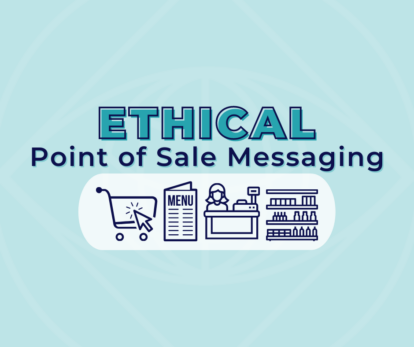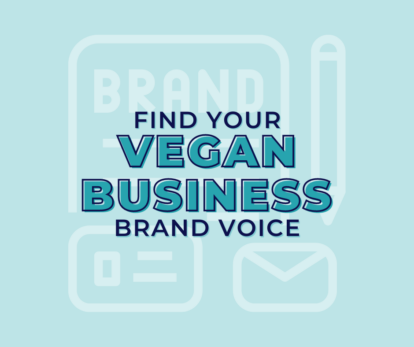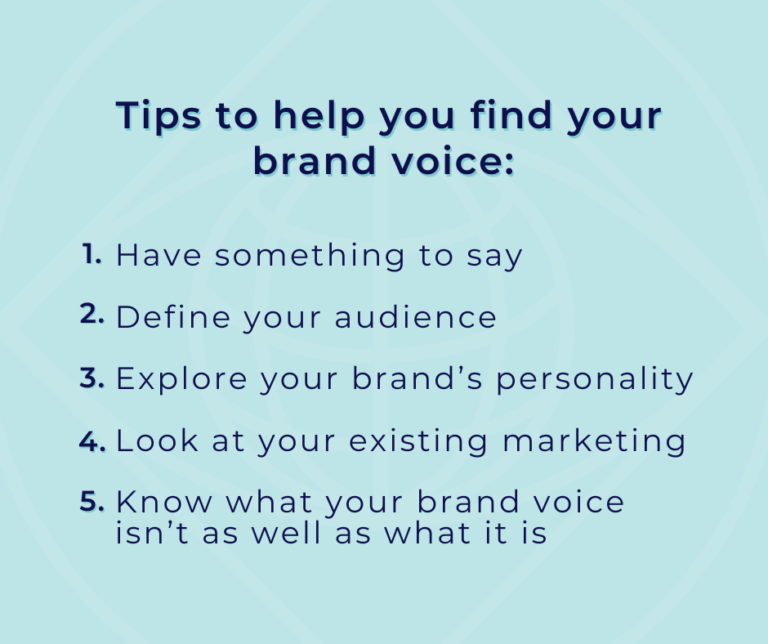Messaging matters, especially at the moment of purchase


Your vegan organisation’s brand voice is not only what your organisation says but how it says it.
This matters for many reasons.
Having a clear brand voice makes it easier to stand out for your competitors. It will also help you to attract “ideal” customers who become loyal brand ambassadors.
(If you run a vegan charity, having a strong brand voice will help you to attract passionate donors and supporters).
Your brand voice is part of your overall brand “identity” – how your business looks and sounds and how that makes people feel, plus what makes your brand different.
You will use your brand voice whenever your vegan organisation communicates with stakeholders. This could cover:
So, if you don’t know what your brand voice sounds like yet, how can you find it? We’ve got some tips for you:
Your brand voice will become much stronger if you feel confident and care about what you’re saying as well as how you’re saying it.
Think about the key values or messages you want to communicate. These pointers might help:
You might find it helpful to write some statements about your brand, and what it believes/stands for – for example:
Remember, you can’t stand for everything, but you must stand for something. If you can define what you stand for and use a genuine, heartfelt voice to communicate, it will help you to reach people who stand for the same thing.
A common challenge for vegan businesses is deciding whether to aim at an already-vegan market or try to reach as many non-vegans as possible.
This will influence your brand voice.
If you’re marketing to non-vegans who could have preconceptions about veganism, you may decide to talk about your products as being plant-based. Another approach is to highlight the ethics of your business/supply chain/sourcing, adopting a tone of voice that is informative and inclusive.
If your audience is already committed to a vegan lifestyle, you might decide you can focus more on activism and put veganism and animal freedom at the centre of your marketing messages.
On the other hand, if you’re trying to reach anyone and everyone, you might just say that your products are “Suitable for vegans” as an aside. In this scenario, you could focus on developing a brand voice that advocates for sustainability.
Lots of characteristics will define your audience too. Their age, interests, beliefs, reading and viewing preferences, cultural backgrounds, families, etc, will all influence the kind of brand voice they relate to.
If your vegan organisation has been up and running for a while, consider your most loyal supporters or customers.
The answers to these questions will help you to understand the things that matter to your audience. In turn, this will shape how your brand communicates.
Don’t worry if your brand hasn’t launched yet! You can still start to build up a picture of your target audience by conducting some research:
As you build up a picture of your audience, you could create a “marketing persona” to remind you who your business is talking to. There are some free tools to help you do this – check out HubSpot’s Make My Persona or Smaply’s Persona Tool.

As humans, our voice is how we communicate something of our personalities. If you think about someone you know really well, you’ll probably be able to describe how they talk and what gives them a unique tone of voice. You might hear someone relay a story about them and think, “Yep, that’s typical”.
Equally, spend five minutes chatting with a stranger, and you’ll probably start to have a sense of their personality and whether you’d gel with them if you spent more time together.
Well, the same is true of your brand’s voice. If it’s strong enough, people will start to recognise it. It will also help them to decide whether they feel an affinity with your vegan organisation’s personality.
For this reason, one of the most powerful ways to find your brand voice is to explore what makes your organisation tick.
If you’re the founder of your vegan organisation and the person who will be writing most of the content, you may have an easier job on your hands. This is because your brand voice may be an extension of your personal voice.
If you’re writing for a larger organisation, the entity needs its own distinct personality, its own heart and soul.
In both scenarios, here are some questions you might want to consider:
If your vegan business has been up and running for a while, pull together a sample of your marketing materials.
If you were to strip away all of the visual branding, would someone know that these marketing materials had come from your business?
If you’re too close to these items because you created them at different stages in your business, ask a friend to have a look at them for you with the above questions in mind.
It can be helpful to pinpoint what things just don’t feel right for your brand voice. For example, you might say, “our brand voice is not….”
As you can see, this exercise really comes into its own when you identify the antithesis of what you don’t want your brand voice to be.
Above all, try not to get too hung up on writing your “tone of voice” guidelines (something that bogs a lot of businesses down). Our advice is to start writing (or even recording yourself talking about your organisation) and exploring your brand voice.
From this, you can create guidelines for your (current or future) team with real-life examples of how your brand sounds. In turn, this will make it easier for multiple people to produce your brand communications across multiple platforms.
Get more advice about running a vegan organisation from the Ethical Globe Academy.